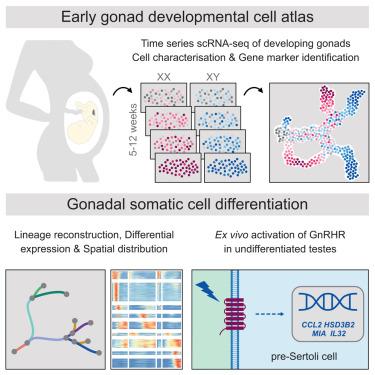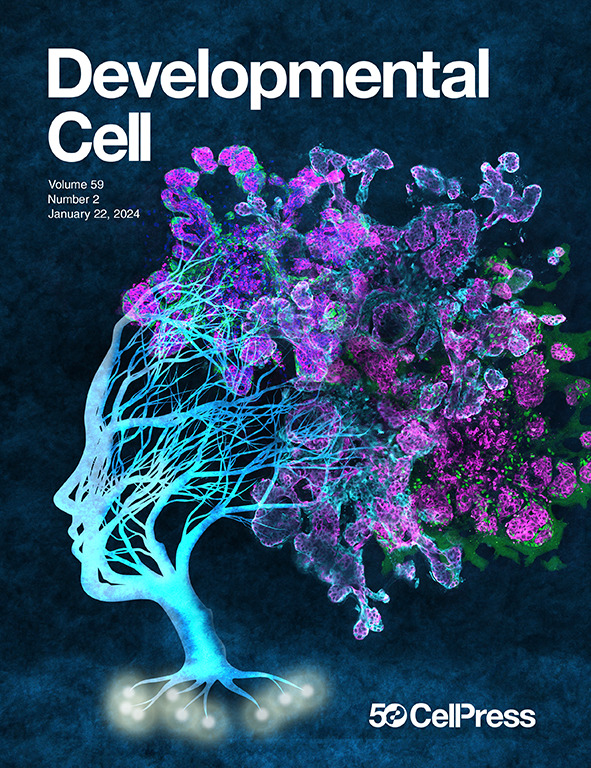Single-cell exploration of gonadal somatic cell lineage specification during human sex determination
IF 8.7
1区 生物学
Q1 CELL BIOLOGY
引用次数: 0
Abstract
Gonad development is an exciting model to study cell fate commitment. A better understanding of sex determination requires the identification of all involved cell types and their dynamic expression programs. Here, we present an atlas of 128,000 single cells from human gonads between 5 and 12 post-conceptional weeks. A focused analysis of somatic cells uncovered a population of bipotential progenitors derived from the coelomic epithelium of both testes and ovaries, which may have the capacity to commit to either a steroidogenic or a supporting fate. Moreover, our analyses suggest that early supporting cells, prior to differentiation into Sertoli or pre-granulosa cells, also give rise to the rete testis/ovarii and that the ovary retains the capacity to feed the supporting cell pool for an extended period of time, directly from the surface epithelium. Finally, the potential involvement of the gonadotropin releasing hormone (GnRH) signaling pathway in regulating testis differentiation was assessed ex vivo.

人类性别决定过程中性腺体细胞谱系的单细胞探索
性腺发育是研究细胞命运承诺的一个令人兴奋的模型。为了更好地理解性别决定,需要识别所有相关的细胞类型及其动态表达程序。在这里,我们展示了128,000个人类性腺单细胞的图谱,这些细胞来自于受孕后5至12周的人类性腺。对体细胞的集中分析揭示了来自睾丸和卵巢的体腔上皮的双电位祖细胞群,它们可能具有甾体生成或支持命运的能力。此外,我们的分析表明,在分化为支持细胞或颗粒前细胞之前,早期的支持细胞也会产生睾丸/卵巢网,并且卵巢直接从表面上皮中保留长时间为支持细胞池提供营养的能力。最后,在体外评估了促性腺激素释放激素(GnRH)信号通路在调节睾丸分化中的潜在作用。
本文章由计算机程序翻译,如有差异,请以英文原文为准。
求助全文
约1分钟内获得全文
求助全文
来源期刊

Developmental cell
生物-发育生物学
CiteScore
18.90
自引率
1.70%
发文量
203
审稿时长
3-6 weeks
期刊介绍:
Developmental Cell, established in 2001, is a comprehensive journal that explores a wide range of topics in cell and developmental biology. Our publication encompasses work across various disciplines within biology, with a particular emphasis on investigating the intersections between cell biology, developmental biology, and other related fields. Our primary objective is to present research conducted through a cell biological perspective, addressing the essential mechanisms governing cell function, cellular interactions, and responses to the environment. Moreover, we focus on understanding the collective behavior of cells, culminating in the formation of tissues, organs, and whole organisms, while also investigating the consequences of any malfunctions in these intricate processes.
 求助内容:
求助内容: 应助结果提醒方式:
应助结果提醒方式:


